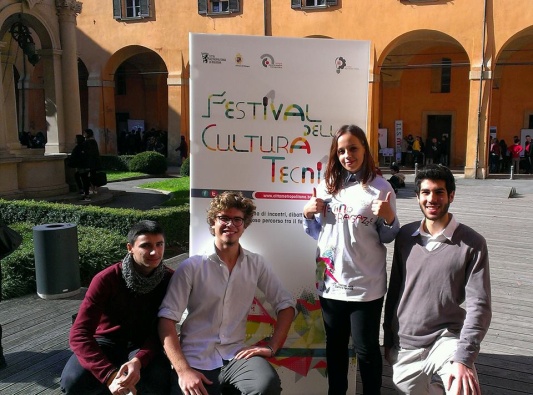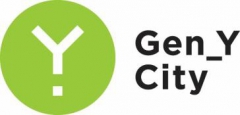According to Business Europe, the lack of Science, Technology, Engineering and Maths (STEM) skilled labour will be one of the main obstacles to economic growth in the coming years. Whilst demand for people with STEM skills is increasing across the world, many STEM workers are approaching retirement age and some forecasts suggest around 7m new ‘tech’ job openings will emerge in the period between 2016 and 2025.
According to the
OECD, the distribution of graduates by field has not changed much since 2005. Humanities, social sciences, law and education still represent a greater share than science, technology, engineering and mathematics in the OECD and G20 countries. In France, Germany, the UK and the US, graduates with STEM qualifications (including international students studying in these countries) represent less than one-third of the talent pool.
In comparison, in 2012, China had 40% STEM graduates and 45% humanities, social sciences, law and education graduates, while the figures for India were 35% and 53% respectively. The OECD forecasts that if the proportions of STEM graduates continue at these levels, by 2030, China and India will account for more than 60% of the OECD and G20 STEM graduates and the BRIICS countries will produce three-quarters of the global STEM graduates. Europe and the United States will be lagging well behind with 8% and 4% of STEM graduates by 2030 respectively.
Whilst some might argue that it doesn't really matter what country produces STEM graduates, as long as there are enough of them to go around and talent continues to be mobile, others rightly argue this is a somewhat simplistic picture.
Whilst talent mobility and immigration policy are inherently linked, everything we’ve learnt about communication and crowd behaviour in recent years suggests that human beings are inherently tribal animals and that the social system which we are exposed to in our formative years is just as important in helping to shape our beliefs and attitudes, as the interactions we have with others.
Similarly, numerous authors and researchers have identified that having an indigenous, high quality STEM education system can deliver many wider, spill-over benefits. These include improving children’s problem-solving and creativity skills; better preparing society to deal with technological innovation; delivering a more competitive workforce; improving the productivity and competitiveness of technology-based firms; and stimulating a higher wage economy.
Many of these same authors are now also making the case for further developing the ‘STEM’ concept by adding Art and Design to promote ‘STEAM’ careers. This is because the addition of art and design promotes the creation of higher value products and services and also because it helps promote ‘tech’ careers to young people as an inherently creative discipline.
To this end, many cities across Europe are trying to address the declining levels of ‘creative-tech’ talent they have in their cities by trying to establish dynamic urban ‘creative-tech’ enrichment marketplaces – populated with
Fab Labs Coding Clubs, Maker Spaces, Science Centres and Festivals - to stimulate more young people into ‘creative-tech’ careers. The
GEN Y City network will focus its exchange and learning activity on this challenge, adapting good ideas and successful initiatives from partner cities such as those described here.

For example, this year the Metropolitan City of Bologna and the City of
Bologna, in collaboration with the partners of the Metropolitan Strategic Plan project ‘the re-launch of technical education’, is organising a
Technical Culture Festival, a rich program of meetings, debates, demonstrations for an adventurous path between doing and thinking, which will take place between October 28 and December 19, 2016. This activity complements numerous other initiatives in the city, designed to inspire young people into ‘creative-tech’ careers.
Similarly, in
Nantes, the eco-system for encouraging ‘creative-tech’ talent comprises a range of initiatives and activities.
Nantes Digital Week promotes the benefits of digital participation and inclusion to local residents; the
Web2Day Digital Festival promotes Nantes as a digital city all around the world; a network of '
Maisons de l'Emploi' provide residents with information about digital jobs and training; the PiNG NGO runs the
Platform C Fab Lab, offering young people opportunities to discover the world of digital manufacturing; Atlantic 2.0 runs
La Cantine, a co-working space for digital entrepreneurs; ‘
Nantes Creative Generations’ promotes exchanges and initiatives between young residents of Nantes and other European Cities; and CLAP supports ‘hard to reach’ young project leaders to bring neighbourhood projects and ideas to reality.

As
Jean-Jacques Derrien, the Project Manager for the City of Nantes explains, “In Nantes, we have an expression ‘à la nantaise’, a term that originated in football journalism in the 90s to describe the particular playing style of FC Nantes, which focused largely on an attacking game, where the collective effort of the team was more important that the individual value of any single player and where each player tried to blend into the set as a trusted partner. In developing our approach and trying to create an environment to inspire young people into digital careers, we are also trying to replicate a similar style, where a range of partner activities all underpin the shared goal of creating a Digital Nantes."
However, some of the biggest challenges for cities in trying to create such a rich ‘creative-tech’ youth enrichment environment are funding; building the capacity of extra-curricular education providers; stimulating crowd action; and influencing member states education policies. This is largely because, under the principle of subsidiarity, national ministries are largely responsible for pre-14 education in many member states and structural funds are generally not targeted on supporting anyone under the age of 15.
Clearly, the whole agenda of ensuring there is sufficient supply of ‘creative-tech’ talent is vitally important if European cities are to stimulate more so-called ‘unicorns’, tech start-up companies valued at over $1 billion.
Whilst - according to research by the Technology Investment Bank,
GP Bullhound - there are now 47 European unicorns (a company valued at one billion dollars), Europe is generally less successful at helping businesses scale-up, grow into industry leaders and enter the global marketplace, than the United States. During
Global Entrepreneurship Week 2016 taking place this month key themes include investment, scaling up and cities, all vital ingredients in the mix to create stronger European creative-tech business performance.
As
Andrus Ansip, the current Vice President of the European Commission and the former Prime Minister of Estonia that is leading the Digital Single Market Project Team notes in
his blog, “Only half of European unicorns have reached a sale or an IPO, compared with two-thirds in the United States – which suggests that Europe has a more challenging environment for technology investment. Start-ups find it difficult to recruit the right talent and then retain it, and to gain access to financing at different stages of their growth. The market for capital and talent is very fragmented, as are the regulatory regimes. This makes it hard to set up a company in a different EU country, with people coming from different countries, or from beyond the EU”.

In response to these issues, under the leadership of the
City of Poznan, the GEN-Y City Network is supporting cities to exchange best practice and learning on how best to develop urban environments that are packed full of rich ‘creative-tech’ inspiration activities that can inspire more young people into ‘creative-tech’ careers and establish new tech start-ups that can help maintain the prosperity of cities across the European Union. The exchange will be centred on a number of central themes identified in the
Baseline Study, such as collaborative leadership and governance, placemaking, developing young creative tech talent, and attracting and embedding migrant tech talent in the city. Follow us
here as we discover and share our stories along the way.

 For example, this year the Metropolitan City of Bologna and the City of Bologna, in collaboration with the partners of the Metropolitan Strategic Plan project ‘the re-launch of technical education’, is organising a Technical Culture Festival, a rich program of meetings, debates, demonstrations for an adventurous path between doing and thinking, which will take place between October 28 and December 19, 2016. This activity complements numerous other initiatives in the city, designed to inspire young people into ‘creative-tech’ careers.
For example, this year the Metropolitan City of Bologna and the City of Bologna, in collaboration with the partners of the Metropolitan Strategic Plan project ‘the re-launch of technical education’, is organising a Technical Culture Festival, a rich program of meetings, debates, demonstrations for an adventurous path between doing and thinking, which will take place between October 28 and December 19, 2016. This activity complements numerous other initiatives in the city, designed to inspire young people into ‘creative-tech’ careers. 
 In response to these issues, under the leadership of the City of Poznan, the GEN-Y City Network is supporting cities to exchange best practice and learning on how best to develop urban environments that are packed full of rich ‘creative-tech’ inspiration activities that can inspire more young people into ‘creative-tech’ careers and establish new tech start-ups that can help maintain the prosperity of cities across the European Union. The exchange will be centred on a number of central themes identified in the Baseline Study, such as collaborative leadership and governance, placemaking, developing young creative tech talent, and attracting and embedding migrant tech talent in the city. Follow us here as we discover and share our stories along the way.
In response to these issues, under the leadership of the City of Poznan, the GEN-Y City Network is supporting cities to exchange best practice and learning on how best to develop urban environments that are packed full of rich ‘creative-tech’ inspiration activities that can inspire more young people into ‘creative-tech’ careers and establish new tech start-ups that can help maintain the prosperity of cities across the European Union. The exchange will be centred on a number of central themes identified in the Baseline Study, such as collaborative leadership and governance, placemaking, developing young creative tech talent, and attracting and embedding migrant tech talent in the city. Follow us here as we discover and share our stories along the way. Submitted by Jim Sims on
Submitted by Jim Sims on 



